Trak Racer TR8
Benefits
- Excellent build quality
- Beautiful, elegant design
- Compatible with all platforms
- Customizable chassis
Disadvantages
- Slightly premium price
- Some monitors can move
Our rating: 9.5/10
Nowadays, it’s very easy to set up a sim-racing setup. The most important peripherals are the base, steering wheel and pedals, and that’s it. With these three products, you’ll be ready to take on all the world’s racers on the world’s most mythical circuits, and in every possible competition.
I’m sure you’ll agree that it’s the chainstays that do most of the work when it comes to sim-racing, even if pedalboards have their fair share of the realism. It’s true that having a powerful engine behind the wheel to simulate the car’s behavior makes for realism, but there are limits to that. Indeed, having a good base and sitting on a stool is not at all immersive, even if the realism is there. For those who want to take this to the next level, there are no 36 ways to go: cockpits.
A cockpit, or chassis if you prefer, is a structure with a racing seat that also allows the mounting of several, if not all, sim-racing peripherals to add a big plus to immersion. After all, the most important thing about sim-racing is immersion; if I don’t feel like I’m in a real race, there’s not much point in having a complete and expensive setup.
In what follows, I’m going to show you the cockpit of a Trak Racercockpit, the TR8. I’m going to tell you about its strengths and weaknesses, and give you my opinion on it.
Main and technical cockpit features
- Sturdy aluminum tubular frame
- Many customization options available, such as the addition of monitor mounts and bucket seats
- Several possible adjustments to suit your preferences
- Sim-racing and flight simulation compatible
- Various monitor mount and bucket seat options available
- Adjustable supports for bases and pedals, as well as for gear levers/handbrakes
- Dimensions 1270x1070x755 mm
Design
Let’s start with the design of the TR8 which is simply sublime. It has to be said that most cockpits look the same, and manufacturers are always trying to stand out from the crowd with flashy, eye-catching designs. But that’s not at all the case with the TR8 which is sober and elegant.
The chassis is tubular with a large diameter. Everything is in slightly matt black, with only the brand logos in white at the bottom of the chassis, giving the TR8 an additional layer of passe-partout. It’s not a flashy cockpit at all, but one that will go wonderfully well with sober setups, and appeal especially to riders looking for discretion. What’s more, the brand reminders near the base support are just perfect: small laser-cut plates with the initials “TR”. It’s a very nice cockpit as far as I’m concerned.
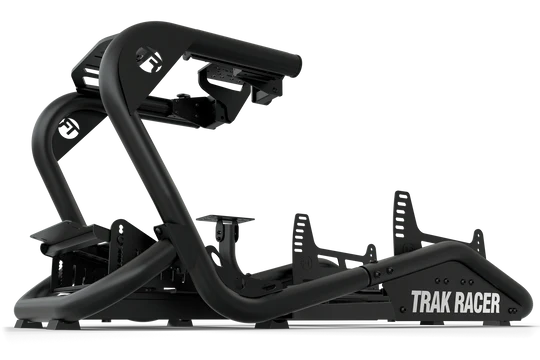
Customized assembly
You know that such a product will arrive at your home disassembled, and that’s normal. Still, the beast is 1270x1070x755 mm in dimension, which is a bit large too. Nevertheless, assembly of the TR8 shouldn’t take more than an hour if you don’t have too much experience in the field, but otherwise it’ll be around 30 – 45 mins for people who know how to tinker a bit. However, it should not be forgotten that TR8 is a customizable cockpit, and that assembly time will vary according to what you’ve taken as extras.
As for sim-racing peripherals, there are mounting points for bases, cranksets and shifters/handbrakes in the basic configuration, along with seat slides of course. All these elements are highly adjustable to perfectly suit your riding style.
Manufacturing and finishing
The TR8 uses aluminum throughout its tubular structure, giving it the rigidity and strength to handle not only the most powerful chainstays, but also the most demanding Load Cell cranksets.
As for the finish, it’s just perfect: all parts are precision-machined, with no burrs or manufacturing defects. This is evident in the tubular structure, the attachment points for the various peripherals, the slides and the various supports for the TR8. The paintwork is beautifully finished, with no apparent flaws. I haven’t inspected the whole chassis for paint smudges, but the parts that show all the time have nothing at all.
Trak Racer has produced an excellent chassis with the TR8a chassis that’s very well finished, very well built, and that will please a good number of racers the world over.
Getting to grips with the cockpit
So, in terms of handling, the TR8 is a rather intuitive chassis, I must say, and above all highly customizable. The company is well aware that sim-racing is a unique discipline, with setups that differ from racer to racer, and I don’t want to get into the subject of competitions.
All brackets and components of the TR8 are easy to reach, easy to handle and designed for easy access and use in all circumstances. Once you’ve adjusted your riding position, you’ll quickly feel at ease with the TR8no matter what kind of motor sport you enjoy. The seat can be adjusted to different positions thanks to the slides, so you’ll be very comfortable with it, even if you’re an F1 fan.
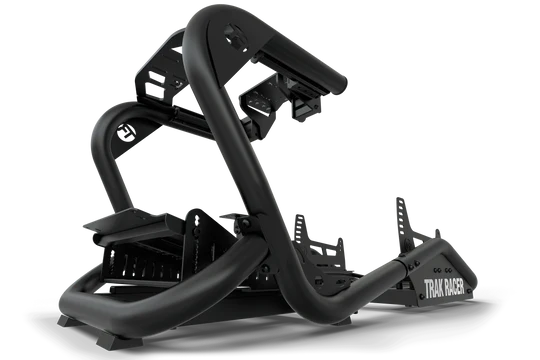
Sensations during play
Now let’s take a look at how the TR8. Put simply: this chassis is perfect for sim-racing. Having tested it with a rather powerful setup (20 nm base), I didn’t feel, or even notice, any cockpit movement. It’s really stable, which is hard to believe when you see that the TR8 has a tubular chassis, not a square one.
The riding position adapts perfectly to your riding style, thanks to adjustments to the seat, chainstay support, bottom bracket support andshifter/handbrake support. In addition, the TR8 can accommodate a screen of up to 70”, or a 3-screen configuration (I recommend the latter).
However, this is where you start to see the limits of such a chassis: with a large screen and a powerful base, you’re going to notice movement on the monitor in front of you. In my opinion, the problem lies in the location of the monitor mount just behind the base, and if you’ve got one that spits out more than 15nm, you’re going to see the screen move with every big force feedback. On a sub-10 nm base(Fanatec CSL DD, Moza R9), I haven’t really noticed this phenomenon.
Compatibility
The TR8 is compatible with all premium sim-racing peripherals available on the market. You can attach powerful bases like the Podium DD2 without the slightest problem. The chassis is very rigid and will take the 25 nm of torque from this base.
The same applies to the cranksets: the support is reinforced to withstand 180 kg of force on a Load Cell. What’s more, there are various mounting points, whether for the base, crankset, seat, monitor or shifter/handbrake.
The TR8 is truly a premium cockpit that will welcome with a smile all the sim-racing products and peripherals you love.
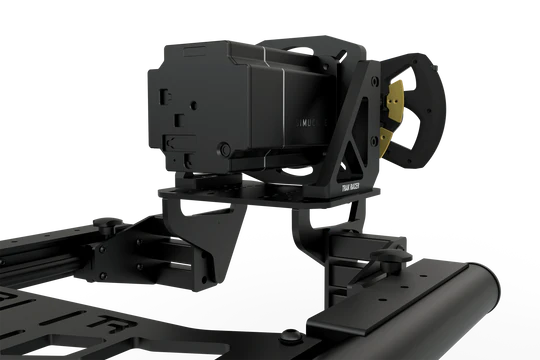
Value for money
The chassis alone of the TR8 is priced at €659 on the Trak Racer. For this price, you won’t get the seat or monitor mount. Honestly, it’s a premium cockpit, a tad expensive, but well worth the price. The value for money of TR8 is simply excellent, and you’ll be hard pressed to find anything better for under €700.
My verdict
I love the TR8. It’s a minimalist chassis, very robust (except with a large screen attached to the rear) and suitable for all riders, from amateurs to the most professional among them. At less than €660, you get a cockpit that includes practically everything you’ll need for sim-racing – well, almost, since you’ll have to buy a seat and a monitor stand if you wish. In any case, I approve of this cockpit, which is both solid and highly customizable, as well as being magnificent.

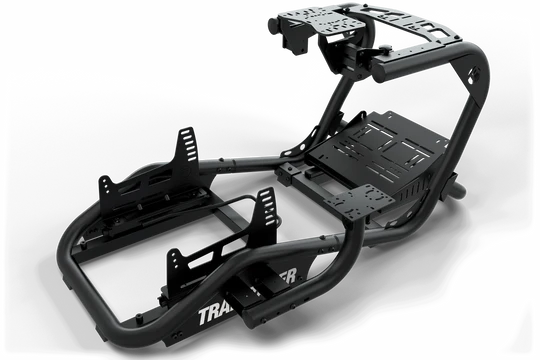
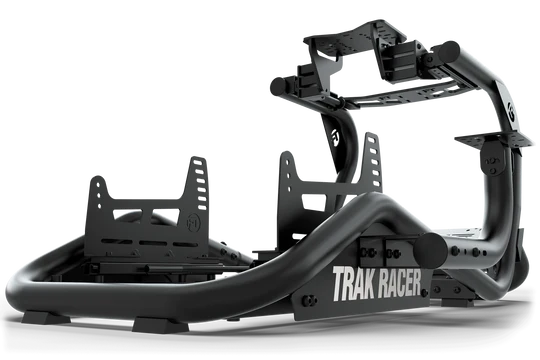
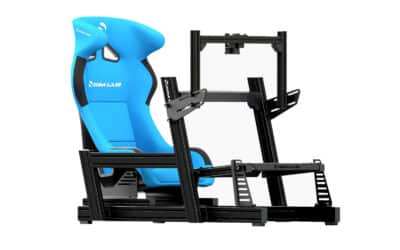
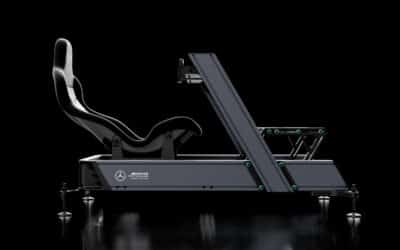


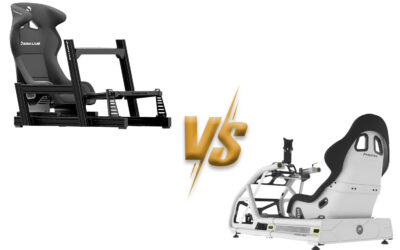
0 Comments